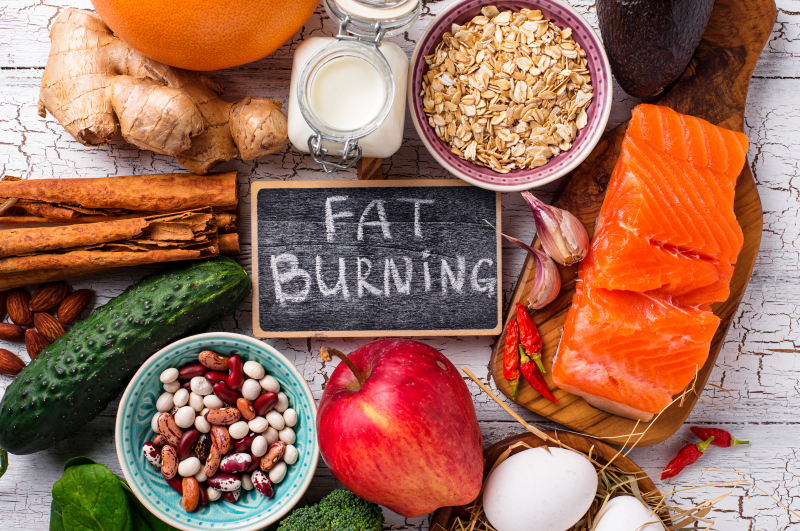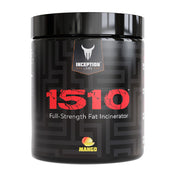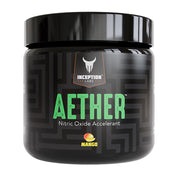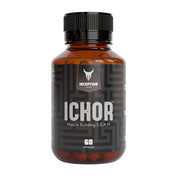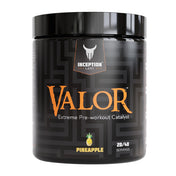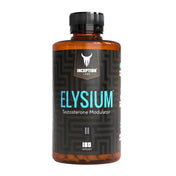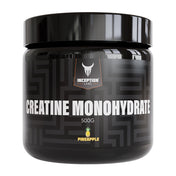Stimulant vs Non-Stimulant
Fat burners are a popular topic in the fitness and weight loss industry, with the claim to help you lose weight by increasing your metabolism, suppressing your appetite, or enhancing your body’s ability to use fat as fuel. But here’s the catch - not all fat burners are created equal. Some of them contain stimulants, with the most common being caffeine. This can boost your energy and alertness but can also cause some unwanted side effects such as jitters, anxiety, insomnia, or high blood pressure.
On the other hand, there are also non-stimulant fat burners, which rely on natural ingredients like green tea, bitter orange, or carnitine. These may provide similar benefits without the unwanted drawbacks. In this article, we will take a closer look at the world of fat burners by breaking down the pros and cons of stimulant and non-stimulant, and explaining how fat burners work and what to look for when choosing one.
Contrary to their name, fat burners do not cause fat cells to disappear. Instead, they operate through other channels to promote weight loss, such as increasing metabolism, reducing the absorption of fat in the digestive system, or suppressing appetite to decrease caloric intake.
The common ingredients that can contribute to these functions include caffeine, green tea extract, and carnitine. It is, however, important to recognise that fat burners are valuable aids but cannot serve as a standalone substitute for a healthy diet and exercise regimen. Their effectiveness is limited without following a well-rounded and balanced lifestyle.
The main distinction between stimulant and non-stimulant fat burners lies in the ingredients they contain. Stimulant fat burners often include caffeine, an agent that is known for increasing activity in the central nervous system and in the body. In contrast, non-stimulant fat burners take a different approach by excluding stimulating agents. Instead, they make use of other ingredients such as green tea, coffee extract, and L-carnitine to achieve the objective. The pivotal indicator that distinguishes a fat burner as stimulant-based or not is the presence of caffeine. Each type has advantages and disadvantages, so it is essential to understand the differences before choosing the most suitable option for you and your lifestyle.
Most common ingredients found in fat burners and how they work.
Green tea, a prevalent component in fat reduction supplements, is linked to numerous potential health advantages, particularly in the context of weight management. The primary advantage of green tea is its ability to enhance metabolism, which is due to its abundance of a phytochemical known as catechins. These compounds facilitate the disintegration of adipocytes and promote increased caloric expenditure, potentially assisting in weight reduction (Hursel, Viechtbauer, & Westerterp-Plantenga, 2009).
Besides its metabolic properties, green tea is also a rich source of antioxidants. These antioxidants shield the body from the negative effects of harmful free radicals and contribute to the enhancement of overall health. Some research suggests that the catechins present in green tea may aid in the reduction of visceral fat, which is often deemed more detrimental than fat stored in other areas of the body. Moreover, studies suggest that green tea can potentially enhance exercise performance and recuperation, which may lead to increased fat oxidation during and post-exercise. Additionally, green tea has shown promise in its capacity to regulate glucose levels in the blood, which can mitigate cravings and boost energy levels.
Green coffee bean extract is a frequently utilised component in fat-reduction supplements due to its potential health advantages. The extract contains chlorogenic acids and caffeine, which are believed to assist in weight management. The intake of caffeine has been associated with decreases in body weight, body mass index (BMI), and body fat. Chlorogenic acids also have the potential to amplify fat metabolism, lower cholesterol and triglyceride concentrations, and improve the balance of obesity-related hormone levels (Shimoda, Seki, & Aitani, 2006).
Apart from weight reduction benefits, chlorogenic acid can aid in the regulation of glucose levels in the blood by reducing carbohydrate absorption in the digestive tract. Green coffee beans are additionally abundant in antioxidants and other pharmacologically active compounds, which may offer a range of health advantages.
The polyphenol antioxidant chlorogenic acid found in green coffee may contribute to promoting weight reduction by limiting the absorption of fat and glucose in the gut and reducing insulin levels to enhance metabolic function. Furthermore, the chlorogenic acids in green coffee may help lower the risk for chronic conditions such as diabetes and heart disease. It is essential to note that a stimulant-free fat burner will not incorporate green coffee bean extract unless all the caffeine has been extracted from the final product.
Black Pepper Extract, also referred to as piperine, is a frequently component in fat burners due to its potential health advantages. Piperine, the active compound in black pepper, has been demonstrated to bolster metabolism through its digestion-enhancing properties. This can promote improved digestive function and supports the maintenance of healthy weight management (Sharma, Kutala, & Kuppusamy, 2013).
Beyond its role in metabolic support, piperine possesses the ability to stimulate thermogenesis, a process associated with the generation of heat in the body. This attribute further reinforces its metabolic support (Okumura, Narukawa, & Watanabe, 2010). Thermogenesis can lead to energy expenditure and fat oxidation, thus contributing to weight reduction. Piperine may inhibit the formation of new adipocytes by modulating proteins involved in fat formation. This mechanism holds the potential to prevent weight gain and promote weight reduction (Park, et al., 2012).
Bitter orange, scientifically referred to as Citrus aurantium, is a common ingredient in fat burners due to the health benefits it can provide. The plant compounds within bitter orange, known as proto alkaloids, have been used in supplements for over two decades, addressing various aspects of well-being, including weight management, athletic performance, skin care, appetite regulation, and cognitive health.
The primary extract derived from bitter orange is p-synephrine, a compound structurally similar to ephedrine, which is the main component of the herbal weight loss supplement Ephedra. P-synephrine is believed to initiate thermogenesis (heat production) and lipolysis (the breakdown of fat), thereby enhancing metabolism (Stohs, Preuss, & Shara, 2011). This metabolic support can result in increased energy expenditure and fat oxidation, ultimately contributing to weight loss. In addition to its metabolic effects, p-synephrine can lead to the formation of new adipocytes, potentially acting as a preventative measure against weight gain and a promotor of weight reduction. Some studies also suggest that the aromatic chemicals in bitter orange may have a subtle appetite-suppressing effect.
Caffeine is a common ingredient in fat burners because of the advantages it can provide. Caffeine can make you feel less tired and improve moods by blocking adenosine receptors and, at higher doses, provides an enhancement to strength output and performance. Additionally, it can suppress appetite, leading to a reduction in caloric intake, and helps to boost metabolism and release fat from fat cells. If you already use a caffeine-based pre-workout, you can replace it with a stimulant fat burner. However, caffeine also has the ability to negatively impact your body. The risks of using caffeine include higher blood pressure due to the narrowing of blood vessels and the slowing down of the MTOR metabolic pathway (Wanke, et al., 2008).
In conclusion, stimulant and non-stimulant fat burners are supplements that can help people lose weight by increasing metabolism, suppressing appetite, and enhancing energy levels. Stimulant fat burners may offer faster and more noticeable results, but they also carry the risk of potential side effects. Non-stimulant fat burners may be safer and more suitable for long-term use, but they also require more patience and consistency to see results. When choosing a fat burner that is right for you, all comes down to personal preference, tolerance and your goals.
Supplement Solutions stocks a range of high-quality, stimulant and non-stimulant fat-burner supplements to help accelerate fat-loss. View the range.
References
Hursel, R., Viechtbauer, W., & Westerterp-Plantenga, M. S. (2009). The effects of green tea on weight loss and weight maintenance: a meta-analysis. international journal of obesity, 33, 956-961. doi:10.1038/ijo.2009.135
Okumura, Y., Narukawa, M., & Watanabe, T. (2010). Adiposity suppression effect in mice due to black pepper and its main pungent component, piperine. Biosci Biotechnol Biochem, 74(8), 1545-9. doi:10.1271/bbb.100117
Park, U.-H., Jeong, H.-S., Jo, Y.-E., Park, T., Yoon, S. K., Kim, E.-J., . . . Um, S.-J. (2012, Apr 18). Piperine, a component of black pepper, inhibits adipogenesis by antagonizing PPARγ activity in 3T3-L1 cells. J Agric Food Chem, 60(15), 3853-60. doi:10.1021/jf204514a
Sharma, H. S., Kutala, V. K., & Kuppusamy, P. (2013, October 19). Special Issue on Oxidative Stress in Health and Disease. Cell Biochemisty and Biophysics, 67, 215-218. doi:10.1007/s12013-013-9774-6
Shimoda, H., Seki, E., & Aitani, M. (2006). Inhibitory effect of green coffee bean extract on fat accumulation and body weight gain in mice. BMC Compement Altern Med, 6, 9. doi:10.1186/1472-6882-6-9
Stohs, S. J., Preuss, H. G., & Shara, M. (2011, Aug 01). A Review of the Receptor-Binding Properties of p-Synephrine as Related to Its Pharmacological Effects. (N. Khaper, Ed.) Oxidative Medicine and Cellular Longevity, 2011, 482973. doi:https://doi.org/10.1155/2011/482973
Wanke, V., Cameroni, E., Uotila, A., Piccolis, M., Urban, J., Loewith, R., & De Virgilio, C. (2008, Jul). Caffeine extends yeast lifespan by targeting TORC1. Mol Microbiol, 69(1), 277-85. doi:10.1111/j.1365-2958.2008.06292.x

